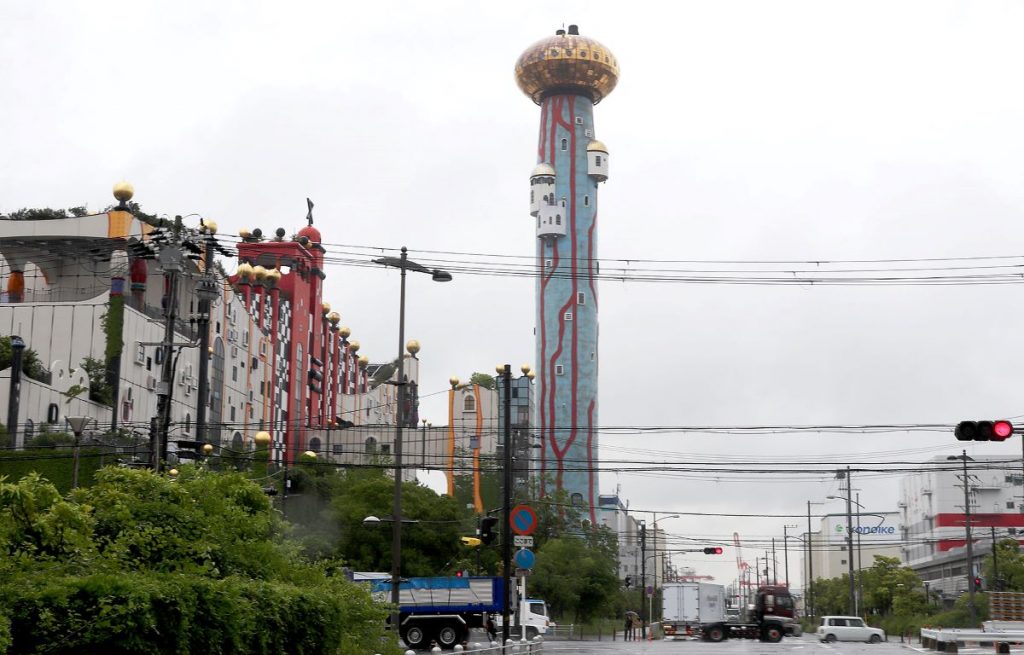
The colorful Maishima Plant is sometimes mistaken for an amusement park. (Photo courtesy of the Maishima Incineration Plant)
Read the full story on Japan 2 Earth - Behind the Beautiful Exterior of Osaka's Maishima Incineration Plant
Did you know that Osaka is home to the "world's most beautiful waste treatment plant"? The Maishima Incineration Plant is run by the Osaka Waste Management Authority in the Konohana Ward of Osaka, not far from Universal Studios Japan (USJ).
The plant recycles steel and aluminum and uses steam to generate electricity. Its artistic design attracts many visitors, contributing to awareness of waste management issues and the SDGs. Once criticized as a waste of taxpayers' money, the jury is still out on the future of the facility.
Artistic Exterior: 'Harmony with Nature'
Crossing the 1.6 km Konohana Bridge and entering the artificial island of Maishima, one cannot help noticing the Maishima Plant. With its light blue towers, golden balls, colorful windows, and mosaic walls, the plant resembles a castle at an amusement park. In fact, it has been mistaken for USJ.
It was designed by Friedensreich Hundertwasser, an artist from Vienna, Austria.

A painter, architect, and environmentalist, Hundertwasser created his design on the concept of "the harmony of technology, ecology, and art."
Based on the idea that ruler-straight lines do not exist in nature and that nothing in nature is exactly the same, the building's lines are curved. Lush greenery surroundings promote a feeling of harmony with nature.
The facility has more than 500 windows, including decorative ones – and no two of them are the same. The red and yellow stripes on the exterior walls are said to represent the flames burning inside.
A Relic of Osaka's Olympic Bid
The idea for the artistic Maishima Plant arose during Osaka's bid for the 2008 Summer Olympics. The 220-hectare vast Maishima Island was intended to host the main athletic facilities, and the incineration facility was built to serve as a landmark.
The Maishima Sludge Center, also designed by Hundertwasser, is located a few hundred meters away. Situated at the gateway to Maishima, it is also intended to catch the attention of visitors.

Construction of the plant began in 1997 and was completed in 2001, at a cost of approximately 60.9 billion JPY.
The facility contains two incinerators with a daily capacity of 900 tons. It also contains a bulky waste treatment facility with a daily capacity of 170 tons.
Continue reading the full story on Japan 2 Earth.
And find more great articles on the environment and the challenges of achieving the SDGs on our new website Japan 2 Earth (J2E), sparking a transition to the future.
RELATED:
- World’s First Recycled Diapers: A Product Born in a Town with No Incinerator
- [Vietnam! Moving Ahead Together] Hitachi Zosen Perseveres with Its Waste-to-Energy Technology in Southeast Asia’s One Trillion Yen Potential Market
- [Road Once Traveled] Japanese City Extends a Helping Hand through Water
(Read the article in Japanese.)
Author: Mika Sugiura







